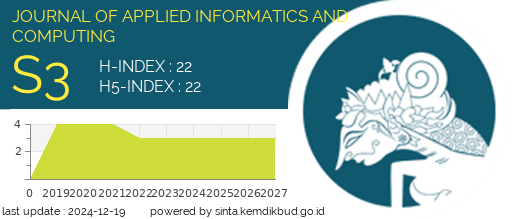System Usability Scale (SUS) Model in Evaluating Internal Quality Audit Systems for Accreditation Process Optimization
DOI:
https://doi.org/10.30871/jaic.v9i2.9210Keywords:
Usability Evaluation, System Usability Scale (SUS), Internal Quality Audit System, Higher Education, Digital TransformationAbstract
The usability of internal quality audit systems plays a crucial role in ensuring the effectiveness of academic governance in higher education institutions. This study evaluates the usability of an internal quality audit system using the System Usability Scale (SUS) framework. The findings reveal a mean SUS score of 72.4, indicating good usability but highlighting key areas for improvement, particularly in navigation, interoperability, and data management workflows. A comparative analysis with previous research shows that while the system performs better than some older academic management systems, it still lags behind general academic information systems. Based on user feedback, recommendations for interface redesign, system integration, and workflow optimization are proposed to enhance overall usability. Future research should focus on user-centered design improvements, AI-driven automation, and broader system interoperability to further refine the effectiveness of quality audit processes in higher education institutions.
Downloads
References
[1] D. Darmanto, S. Septiansyah Indra, S. Supiarti, and K. Senderela, “Penerapan Sistem Informasi Audit Mutu Internal Untuk Meningkatkan Kinerja Penjaminan Mutu Perguran Tinggi,” Smart Comp Jurnalnya Orang Pint. Komput., vol. 11, no. 4, pp. 674–682, 2022, doi: 10.30591/smartcomp.v11i4.4261.
[2] Fenny Purwani and fatikah aulia farhah, “Usability Testing Analysis On Professional Social Media Using The System Usability Scale (Sus) Method,” J. Perangkat Lunak, vol. 6, no. 3 SE-Articles, pp. 392–399, Oct. 2024, doi: 10.32520/jupel.v6i3.3426.
[3] W. Welda, D. Putra, and A. Dirgayusari, “Usability Testing Website Dengan Menggunakan Metode System Usability Scale (Sus)s,” Int. J. Nat. Sci. Eng., vol. 4, p. 152, Nov. 2020, doi: 10.23887/ijnse.v4i2.28864.
[4] A. Maulia, S. Kristanto, and L. Hakim, “System Usability Scale dalam Evaluasi Pengembangan Aplikasi Prospect menggunakan Metode Activity Oriented Design,” Infomatek, vol. 26, pp. 135–142, Jun. 2024, doi: 10.23969/infomatek.v26i1.14094.
[5] P. Vlachogianni and N. Tselios, “Perceived Usability Evaluation of Educational Technology Using the Post-Study System Usability Questionnaire (PSSUQ): A Systematic Review,” 2023. doi: 10.3390/su151712954.
[6] J. Brooke, “SUS: A quick and dirty usability scale,” Usability Eval. Ind., vol. 189, Nov. 1995.
[7] J. R. Lewis, “The System Usability Scale: Past, Present, and Future,” Int. J. Human–Computer Interact., vol. 34, no. 7, pp. 577–590, Jul. 2018, doi: 10.1080/10447318.2018.1455307.
[8] A. Bangor, P. T. Kortum, and J. T. Miller, “An Empirical Evaluation of the System Usability Scale,” Int. J. Human–Computer Interact., vol. 24, no. 6, pp. 574–594, Jul. 2008, doi: 10.1080/10447310802205776.
[9] J. Fernández-Herrero, “Evaluating Recent Advances in Affective Intelligent Tutoring Systems: A Scoping Review of Educational Impacts and Future Prospects,” 2024. doi: 10.3390/educsci14080839.
[10] K. Y. Sarasmayana, L. J. E. Dewi, and I. M. G. Sunarya, “Usability Evaluation Of The Academic Information System Using The Concurrent Think-Aloud, Webuse, And Sus Methods,” J. Comput. Networks, Archit. High Perform. Comput., vol. 6, no. 2 SE-, pp. 903–912, Jun. 2024, doi: 10.47709/cnahpc.v6i2.3977.
[11] F. Agustina, R. Annisa, N. Ansori, W. Findiastuti, and I. D. Aisyah, “Usability Evaluation of Academic Information System Using the WEBUSE Method: A Study on University of Trunojoyo Madura Web Portal,” in 2022 IEEE 8th Information Technology International Seminar (ITIS), 2022, pp. 184–189. doi: 10.1109/ITIS57155.2022.10009969.
[12] M. Althobaiti and P. Mayhew, Assessing the Usability of Learning Management System: User Experience Study. 2016. doi: 10.1007/978-3-319-28883-3_2.
[13] G. Agrawal, A. Dumka, and M. Singh, “Usability and accessibility-based quality evaluation of Indian airline websites: An MCDM approach,” Univers. Access Inf. Soc., vol. 22, no. 4, pp. 1455–1467, 2023, doi: 10.1007/s10209-022-00895-7.
[14] D. Demırkol, C. Seneler, T. Daım, and A. Shaygan, “Measuring perceived usability of university students towards a student information system (SIS): A Turkish university case,” Technol. Soc., vol. 62, p. 101281, 2020, doi: https://doi.org/10.1016/j.techsoc.2020.101281.
[15] T. Kaneva, Y. Kalmukov, and I. Valova, Analysis of the user experience in a web-based university staff’s publication management system. 2021. doi: 10.1109/HORA52670.2021.9461352.
Downloads
Published
How to Cite
Issue
Section
License
Copyright (c) 2025 Yudie Irawan; Fitri Budi Suryani, Savitri Wanabuliandari; Syafiul Muzid

This work is licensed under a Creative Commons Attribution-ShareAlike 4.0 International License.
Authors who publish with this journal agree to the following terms:
- Authors retain copyright and grant the journal right of first publication with the work simultaneously licensed under a Creative Commons Attribution License (Attribution-ShareAlike 4.0 International (CC BY-SA 4.0) ) that allows others to share the work with an acknowledgement of the work's authorship and initial publication in this journal.
- Authors are able to enter into separate, additional contractual arrangements for the non-exclusive distribution of the journal's published version of the work (e.g., post it to an institutional repository or publish it in a book), with an acknowledgement of its initial publication in this journal.
- Authors are permitted and encouraged to post their work online (e.g., in institutional repositories or on their website) prior to and during the submission process, as it can lead to productive exchanges, as well as earlier and greater citation of published work (See The Effect of Open Access).











